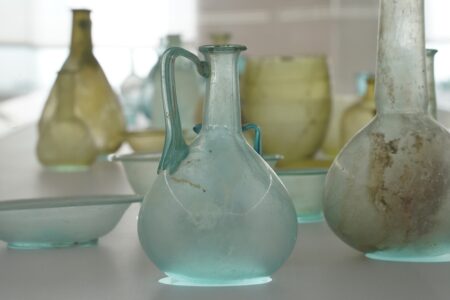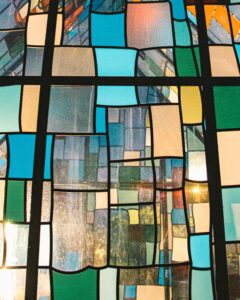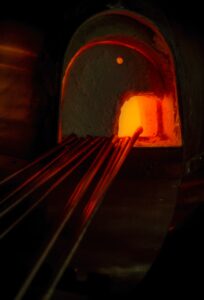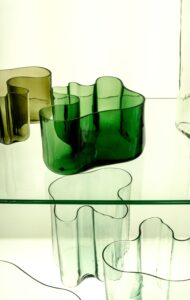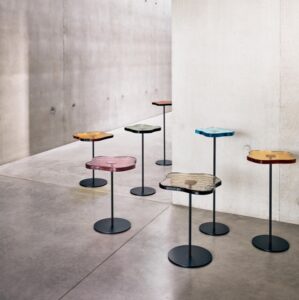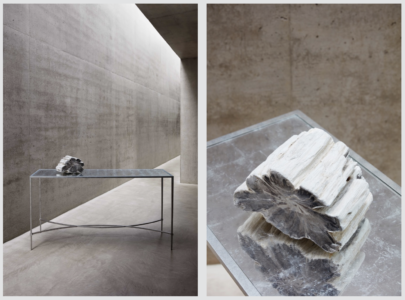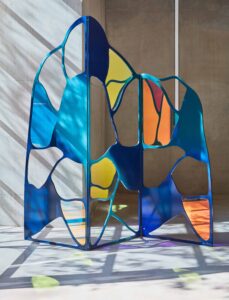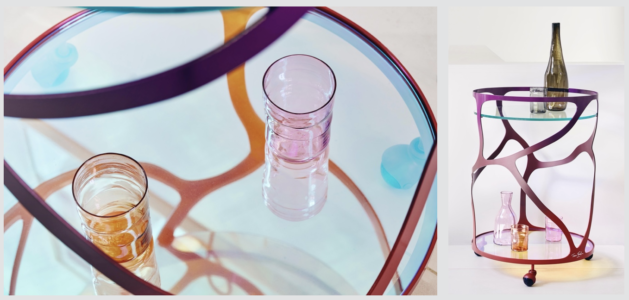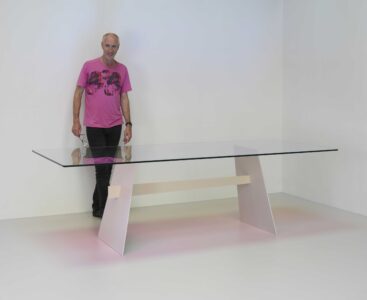Glass is certainly a stalwart of design, making its way into so many of our own creations. Though, its influence goes far beyond table tops and decorative mirrors, heralding cultural, scientific, and artistic advances since pre-historic times. In its traditional iteration, glass is a product of just three humble ingredients: sand, sodium carbonate, and crushed limestone. Put simply, just add heat and you’ve got glass. Though, its history and modern applications are much more intricately interesting than that recipe may imply.
In the beginning, glass was not man-made but, rather, a product of the elements. We find traces of natural types of glass like obsidian, which is formed by volcanic lava, being used as cutting tools, for example. In similarly alchemical fashion, other types of natural glass can be formed when lightning strikes sand.
In the late Bronze Age, humans began to give nature a helping hand, producing glass intentionally. There are many examples of this burgeoning practice scattered across the world, such as Roman works of glass found as far afield as China. The Middle Ages saw a boom in glass production, specifically in Europe. It was in the 13th century that England began to play a significant role, creating broad sheet glass as well as stained glass for Cathedrals windows. By the 16th century the tradition had extended to mirrors, which were being produced in Venice by pouring a mixture of mercury and tin onto the surface of glass.
Though there was eventually a move toward mechanisation in glass making around the 1920s, there’s been a resurgence of the art of glass blowing to accompany a mounting interest in craft. Today it’s not hard to track down an artisan making traditionally blown vessels and artworks. Some companies are even making mouth-blown window glass the old-fashioned way, which is a fascinating process that has really got to be seen to be believed. With this growing curiosity comes institutions like The Corning Museum of Glass in New York, which draws together the disparate origins and influences of glass, exhibiting it so as to speak to the greater context of human history.
Tom’s design deal first and foremost with metal. Though, it can be very rewarding to introduce complementary materials to the forms of our collection, adding a swathe of clear glass to create a crisp effect, for example. Over the years, we’ve expanded our offering to include less common applications of glass, which bring a truly unique character to our distinctive designs.
Venetian Glass
Venice has always been something of a mecca for glassmaking, with activities centred around the island of Murano. Venetians were incredibly innovative since the start of the tradition in the 13th century, with close trade ties to Eastern glass making hubs like Syria and Egypt, which flowed new expertise to the city state.
We use Venetian glass as the jewel-toned tops of our Lily Cocktail Tables. They take form as thick, molten slabs which flow organically into the shapes of lily pads. They create a captivating focal point perched on the simple stem of the table, bringing a very haptic quality to the design.
Antiqued Glass
Antiqued glass is our modern way of reflecting the history and individuality of glass making. One example that we introduce to our designs is Verre Eglomise, which involves a traditional French method of gilding, applied to the reverse side of the glass. Each overlapping leaf dries to produce intricate irregularities resulting in a beautiful, aged effect.
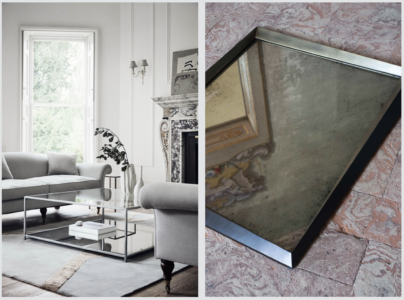
Madison Coffee Table in Moon Silver with an Old Silver Antique Mirror shelf (left) + Phoenix Mirror in Black and Gold with Old Silver Antique Mirror (right)
Antiqued Mirror also works wonderfully to bring an aged look to our furniture designs. Its creation involves the measured application of certain solutions to the surface of the glass, which produces a reflective quality with carefully conjured idiosyncrasies speckled throughout. It lends a certain sense of character and warmth to classic designs like our Madison Coffee Table or Phoenix Mirror.
Dichroic Glass
Dichroic glass is a striking material with a particularly contemporary look to it, displaying a spectrum of colours which transmute into one another as the surface is viewed from different angles. The effect is achieved by stacking layers of metal oxides, which was refined for the modern era by NASA scientists. Though, rare examples of colour-changing glass can be traced back to at least the 4th century AD.
We’ve taken this reimagined ancient material and combined it with our contemporary designs. The spellbinding effect introduces a new dimension to pieces like our Papillon Screen or Drinks Trolley, for example. It also creates a fantastical effect when paired with our Edge Dining Table to cast a veil of colour over the stark, angular base.
You can find out more about our range of finishes and materials here. If you’d like to learn about how we can customise our designs using glass, please do get in touch. We’d be delighted to advise on your options, or work on a bespoke piece to suit your taste.
Text by Annabel Colterjohn
